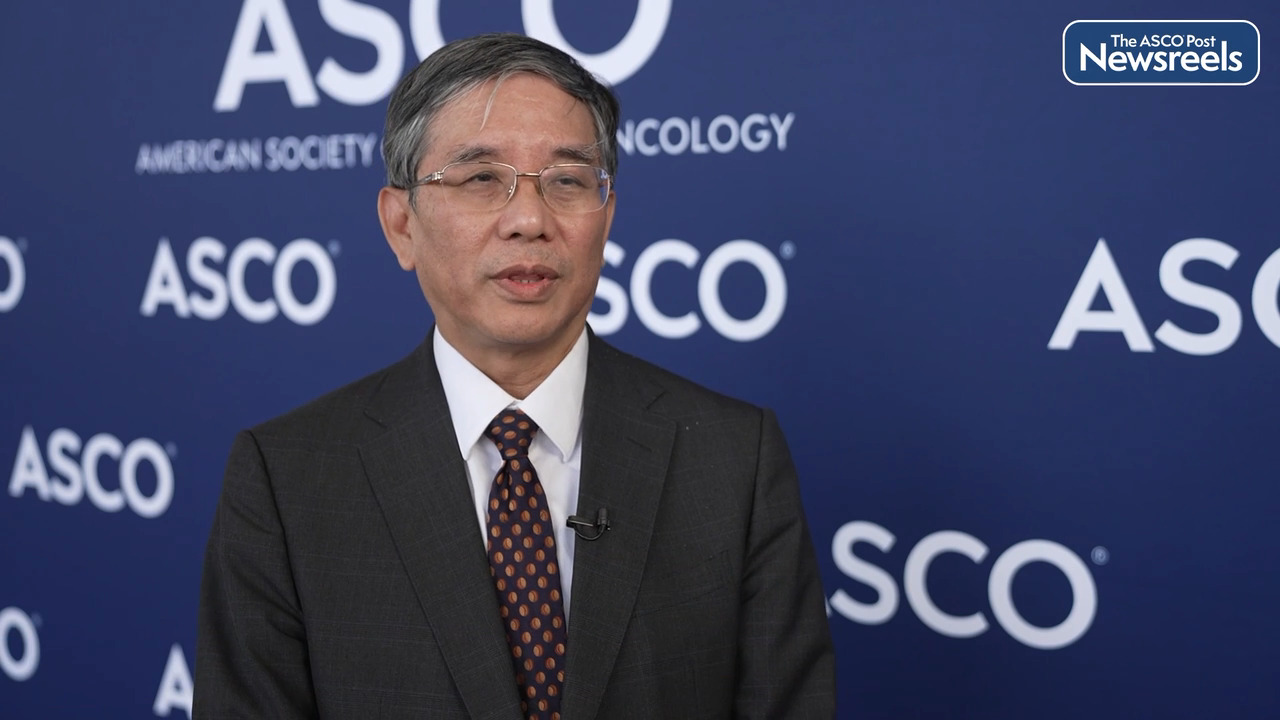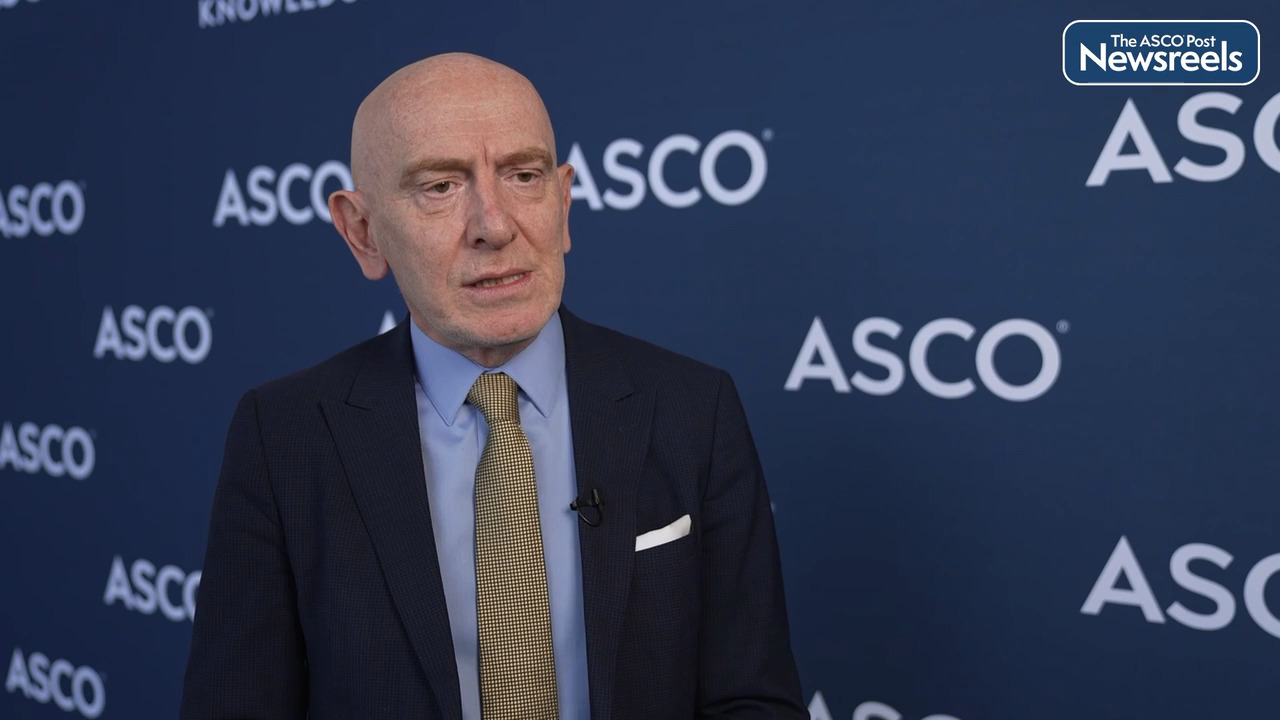Transcript
Disclaimer: This video transcript has not been proofread or edited and may contain errors.
Narjust Florez, MD:
In a quick one minute, can you tell us the design of the study?
Filippo Gustavo Dall'Olio, MD:
Yeah. So basically, SAFIR02 was a randomized phase II trial and the issue they addressed was if immunotherapy anticipated respect to progression, so in a maintenance treatment, could add something respect to the standard of care that was chemotherapy and then maybe pemetrexed in no squamous histology. So, the study was negative. So basically, the patients were randomized two-to-one ratio between durvalumab and standard of care, no difference. And then a subpopulation that was the PD-L1-positive, they found a small difference, but the study was not powered enough to validate it.
So we took the samples taken at randomization and we analyze it with the whole genome sequencing with a very low coverage actually, it was 0.1x to calculate the tumor fraction. And this is where the study starts, with the tumor fraction. Tumor fraction is basically is the proportion of ctDNA, of tumor DNA, on the total cell-free DNA. We all have a lot of DNA in blood, but just a part of this DNA is from cancer in patient with tumor, of course. And so we use [inaudible 00:01:38]-based method, so cancer as [inaudible 00:01:41] number alterations, and this allow us to discriminate between normal cell-free DNA and tumor DNA.
So these patients were in response or stability of disease because of the design of the study, and so at the beginning we were not sure to find any DNA. But actually 20% of patients were DNA-positive. And so even if they had a radiological response, they still have the disease that was active, and these patients had no benefit from any therapy, actually. So, they are really a population with an unmet need.
Narjust Florez, MD:
So in these case, are patients that still have circulating tumor DNA and then you try to understand the benefit or the lack of benefit and the tumor fraction is the proportion of these cancer cells circulating after definite treatment? Is that correct?
Filippo Gustavo Dall'Olio, MD:
Exactly. Exactly.
Narjust Florez, MD:
That's a very noble use of circulating tumor DNA and I will have to say. So, as we are learning from this study and we want to try to apply in reality, could it be used when we used in some of these commercial platforms outside of the study?
Filippo Gustavo Dall'Olio, MD:
Yeah, there are commercial platform that calculates tumor fraction, Foundation Medicine, for example. And yeah, there are studies on its use. We have a study with one of these platform, and showing that if you have a high tumor fraction, you don't benefit from immunotherapy in first-line setting and it's better if you add chemo. So, yes, I think it's a part of the future of precision medicine anyway. In escalating treatment, it's very, very nice.
We also found that there is quite a strong correlation with tumor burden. We also know that tumor burden is important in addressing the prognosis of patients, but it's not that immediate to incorporate in, for example, in stratification of patient in clinical trials. Because you have to account for sometimes a lot of metastases, so it's not easy for a radiologist to calculate maybe 20, 25 metastases while with a tumor fraction you just have one number, very easy, very immediately, you can use everywhere.
Narjust Florez, MD:
My last question is, was there any relation with PD-L1 and tumor fraction in these patients?
Filippo Gustavo Dall'Olio, MD:
No, there was no relationship. And so it's really independent from other biomarkers.
Narjust Florez, MD:
And to finalize the conversation, how would you summarize the results to the community oncologists that are caring for many of our patients, not only in the US, but all across the globe?
Filippo Gustavo Dall'Olio, MD:
I would say that tumor fraction is a really important prognostic factor. If you have lot of tumor DNA in the blood, you have probably a very large, extended, aggressive disease and then you have to escalate your treatment. If you have a low amount of no amount of DNA in the blood, then probably you have a less aggressive disease, you can think to deescalate.
Narjust Florez, MD:
Well, thank you so much for your time. This is very noble approach and we can wait to hear more about you in the future.
Filippo Gustavo Dall'Olio, MD:
Thank you very much to you.
Narjust Florez, MD:
Thanks.





